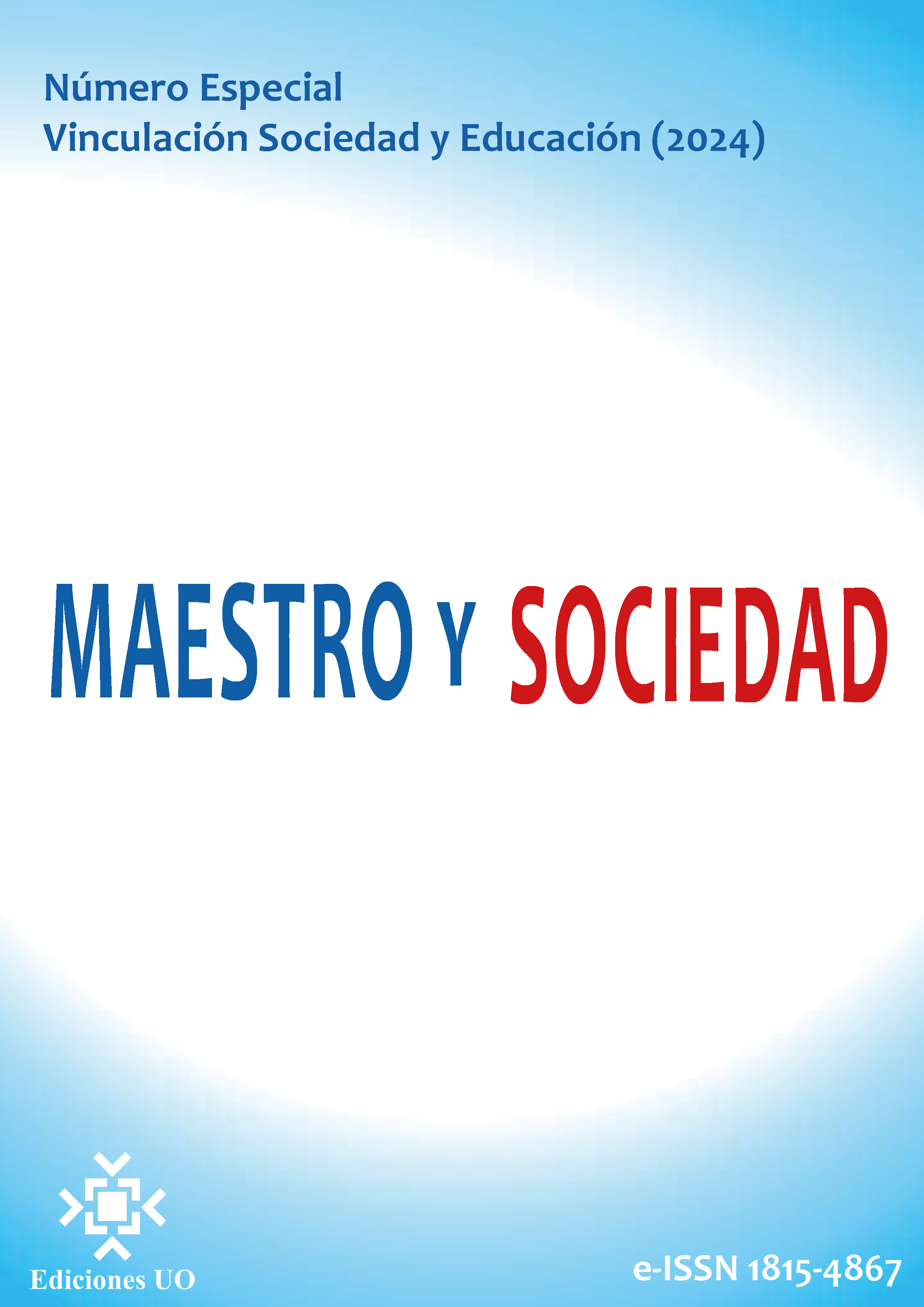Study of computer crimes in the community "Mocochal": causes and preventions
Keywords:
Computer crime, Computer security, Rural community, Vulnerability, PreventionAbstract
Introduction: Cybercrime is a growing threat around the world, especially in rural communities, where resources to prevent and combat these crimes are limited. In this sense, the objective of this article is to carry out the study of computer crimes in the “Mocochal” community of the Calceta parish, Bolívar canton. Materials and methods: Quantitative research methodology was used, with a descriptive scope, a field and documentary-type design, applying blended surveys with a sample of 104 people to obtain data on the prevalence of computer crimes in the community. Results: The results showed that a significant proportion of 17.3% of the people surveyed experienced some type of computer crime and that the most vulnerable groups are older adults. Discussion: A common threat in these communities is the theft of personal and financial data, which is why it is important that communities take measures to protect themselves from these threats. This may include using strong passwords, protecting personal and financial information, installing security software, and regularly updating computer systems. Conclusions: Based on this, it is concluded that additional prevention measures are needed to combat the threat, training on computer crimes and computer security is also required.
References
Acosta, M., Benavides, M., & García, N. (2020). Delitos informáticos: Impunidad organizacional y su complejidad en el mundo de los negocios. Revista Venezolana de Gerencia, 89(89). https://doi.org/10.37960/revista.v25i89.31534
Aguilar, C., & Fonseca, I. (2019). Peligros de las redes sociales: Cómo educar a nuestros hijos e hijas en ciberseguridad. COMeIN, 23(6), 1–24. Obtenido de: https://doi.org/10.7238/c.n6.1132
Ajila, A. (2019). Análisis jurídico de las leyes que amparan a víctimas del delito informático en Santo Domingo. Obtenido de: http://dspace.uniandes.edu.ec/handle/123456789/10868
Alcaraz, C., Castro, N., & Calvo, G. (2021.). Investigación en cyberseguridad. Jornadas Nacionales de Investigación en Ciberseguridad. Obtenido de: https://ruidera.uclm.es
Alcivar, M., Balseca, P., & Ferrin, H. (2022). La contabilidad y cultura tributaria en los comerciantes de mercados populares. 3, 32–42.
Aparicio, V. (2022). Delitos informáticos en Ecuador según el COIP: un análisis documental. Sapienza: International Journal of Interdisciplinary Studies, 3(1), 1057–1063. Obtenido de: https://doi.org/10.51798/sijis.v3i1.284
Azuero, Á. E. (2019). Significatividad del marco metodológico en el desarrollo de proyectos de investigación. Revista Arbitrada Interdisciplinaria Koinonía, 4(8), 110.
Enríquez, J. V., & Alvarado, Y. C. (2015). Los delitos informáticos y su penalización en el Código Orgánico Integral Penal Ecuatoriano. Sathiri, 8, 171. https://doi.org/10.32645/13906925.404
Martínez, N., & Martínez, R. (2018). Los jóvenes y la ciberseguridad en zonas. RECAI Revista de Estudios En Contaduría, Administración e Informática, 7(20), 14–35. Obtenido de: https://www.redalyc.org/articulo.oa?id=637968308002
Mendivil, E. (2019). Ciberseguridad, Comparativa y Aplicaciones. 1–60. Obtenido de: http://hdl.handle.net/11531/28934
Mora, D., Agredo, N., & Meneses, R. (2020). Sistema para la gestión y prevención de riesgos de ciberseguridad en la ciudad de Popayán. 8(75), 147–154. Obtenido de: http://hdl.handle.net/20.500.12494/18429
Mero, U., Baduy, A., & Cárdenas, E. (2022). Producción avícola y su incidencia en el desarrollo económico. 43–61. Obtenido de: https://revistas.uleam.edu.ec/index.php/business_science/article/view/227
Suárez, D. (2022). Validación e Implantación de un curso de formación acerca de la competencia digital y la ciberseguridad en el futuro profesorado de la comunidad autónoma de canarias empleando la técnica escape room. Obtenido de: https://repositorio.grial.eu
Toala, I. (2021). Delitos informáticos frecuentes en el Ecuador: Casos de estudio. Universidad Politécnica Salesiana Sede Guayaquil. Revista EIA, ISSN 1794-1237, Volumen 17, 1–323. Obtenido de: http://dspace.ups.edu.ec/handle/123456789/10070
Vargas Borbúa, R., Reyes Chicango, R. P., & Recalde Herrera, L. (2017). Ciberdefensa y ciberseguridad, más allá del mundo virtual: modelo ecuatoriano de gobernanza en ciberdefensa. URVIO - Revista Latinoamericana de Estudios de Seguridad, 20, 31. Obtenido de: https://doi.org/10.17141/urvio.20.2017.2571
Vélez, E. (2022). Análisis de ciberseguridad en redes de telecomunicaciones y sistemas informáticos para Educación 4.0 como respuesta a la Industria 4.0 en el Ecuador. Universidad católica de Santiago de Guayaquil. 1–125. Obtenido de: http://repositorio.ucsg.edu.ec
Published
How to Cite
Issue
Section
License
Copyright (c) 2024 Jéssica Johana Montes Vera, Karen Barbarita Álava Zambrano, Willians Eduardo Basurto Vidal, Aura Dolores Zambrano Rendón

This work is licensed under a Creative Commons Attribution-NonCommercial-NoDerivatives 4.0 International License.
This journal provides immediate open access to its content, based on the principle that offering the public free access to research helps a greater global exchange of knowledge. Each author is responsible for the content of each of their articles.



























 Universidad de Oriente
Universidad de Oriente 